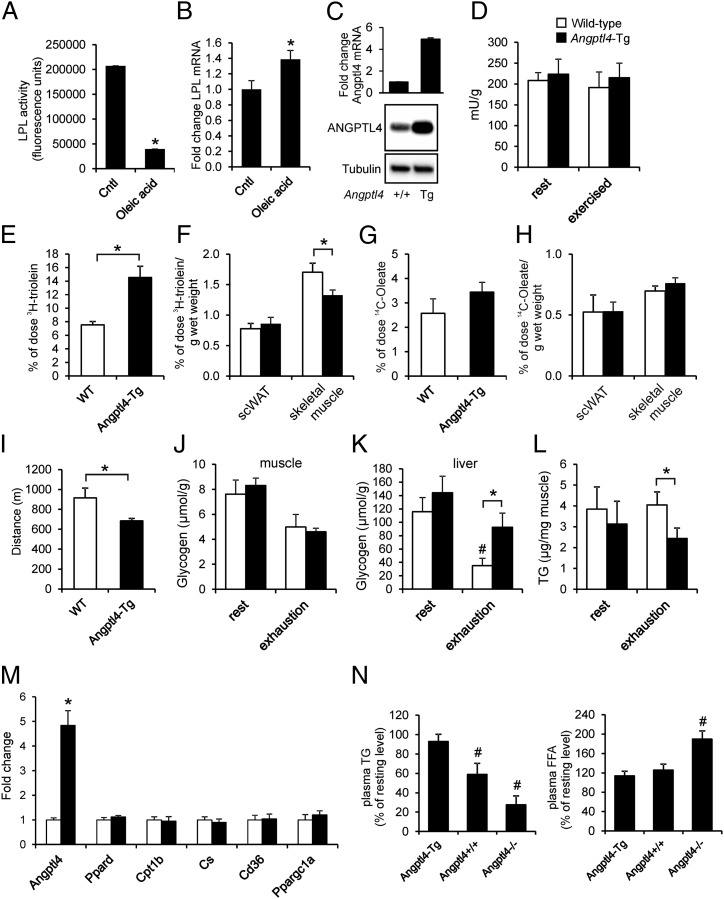Fig. 6.
Angptl4 up-regulation impairs LPL activity and uptake of plasma TG-derived fatty acids in muscle. (A and B) Heparin-releasable LPL activity (A) and Lpl mRNA (B) in mouse C2C12 myotubes treated with oleic acid (400 µM) for 24 h. (C) ANGPTL4 protein abundance and Angptl4 mRNA expression in mouse skeletal muscle. (D) Total LPL activity in skeletal muscle (gastrocnemius) of WT and Angptl4-Tg mice at rest and after 90 min of moderate running exercise (12 m/min). (E) Serum 3H activity after 15 min of running in WT and Angptl4-Tg mice injected with [14C]-oleate together with glycerol tri[3H]oleate-labeled VLDL-like particles. (F) 3H-activity in subcutaneous adipose tissue and gastrocnemius after 15 min of running. (G) Serum 14C activity after 15 min of running in WT and Angptl4-Tg mice injected with [14C]-oleate together with glycerol tri[3H]oleate-labeled VLDL-like particles. (H) 14C activity in subcutaneous adipose tissue and gastrocnemius after 15 min of running. (I) Distance covered, excluding warm-up, by WT and Angptl4-Tg mice subjected to an incremental exercise test to exhaustion. (J–L) Muscle glycogen (J), liver glycogen (K), and muscle TG (L) levels in WT and Angptl4-Tg mice at rest or after exhaustive running exercise. (M) mRNA expression of selected genes in skeletal muscle (gastrocnemius) of WT and Angptl4-Tg mice at rest. (N) The relative levels of plasma TG (Left) and FFA (Right) in the exercised state (90 min of moderate running exercise) compared with the resting state (90 min rest) in WT, Angptl4-Tg, and Angptl4−/− mice. *Significantly different from WT mice according to Student t test (P < 0.05). #Significantly different from resting mice according to Student t test (P < 0.05). Error bars represent SEM; n = 6–10 mice per group.

